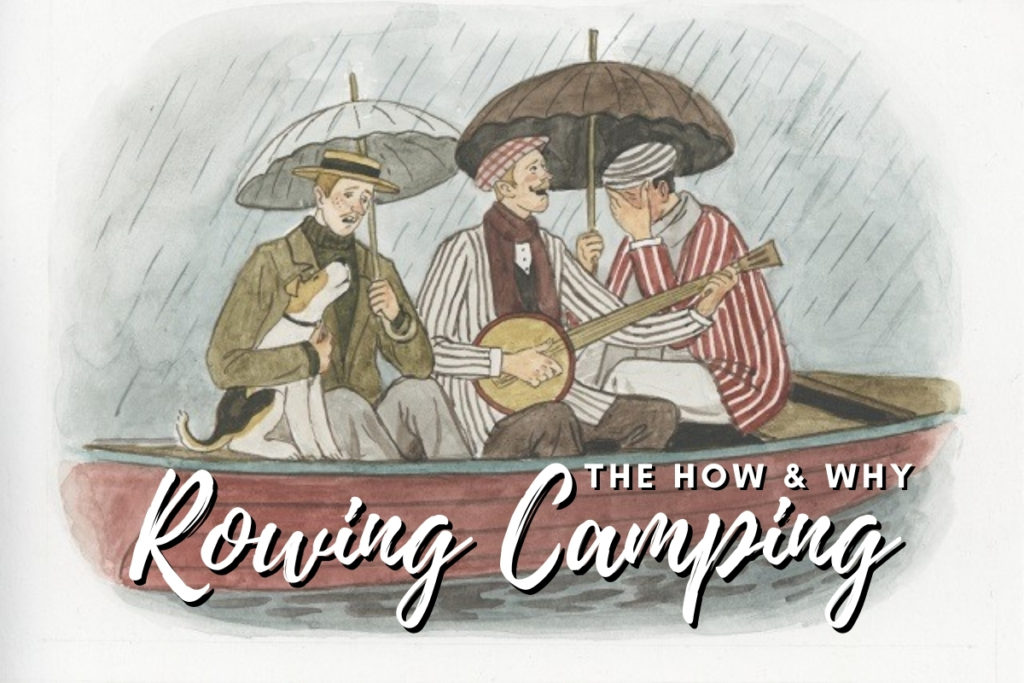
Rowing Camping, the How and Why
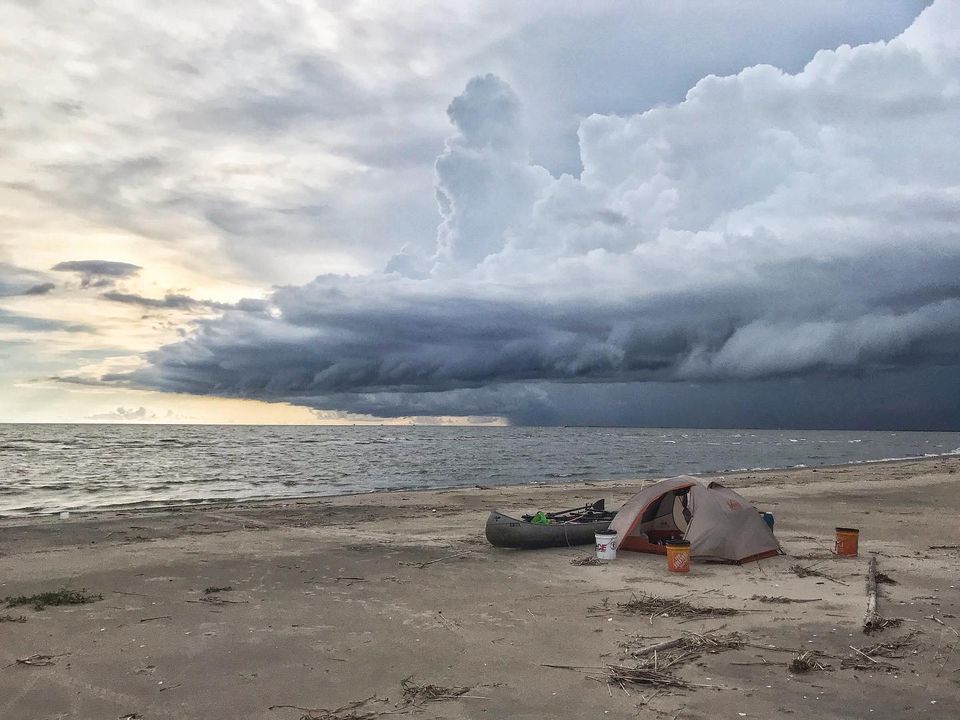
“My rowing friends don’t get it”. That was the succinct assessment of Marieta Wynn, having spent almost an hour discussing with me her plans to undertake a rowing camping expedition down the American reaches of the Columbia River in July and August 2021. Rowing with both her club on the Willamette River in Oregon and with Avalon, an international racing club and team, Marieta understands 1000 m down a straight course at Masters regattas and loves head racing. And she also knows that there is much more to the wide world of rowing. Unfortunately, many rowers, especially in North America, have a surprisingly parochial understanding of what our sport includes. It is a shame, since they are missing out on potential opportunities. Including to go rowing camping.
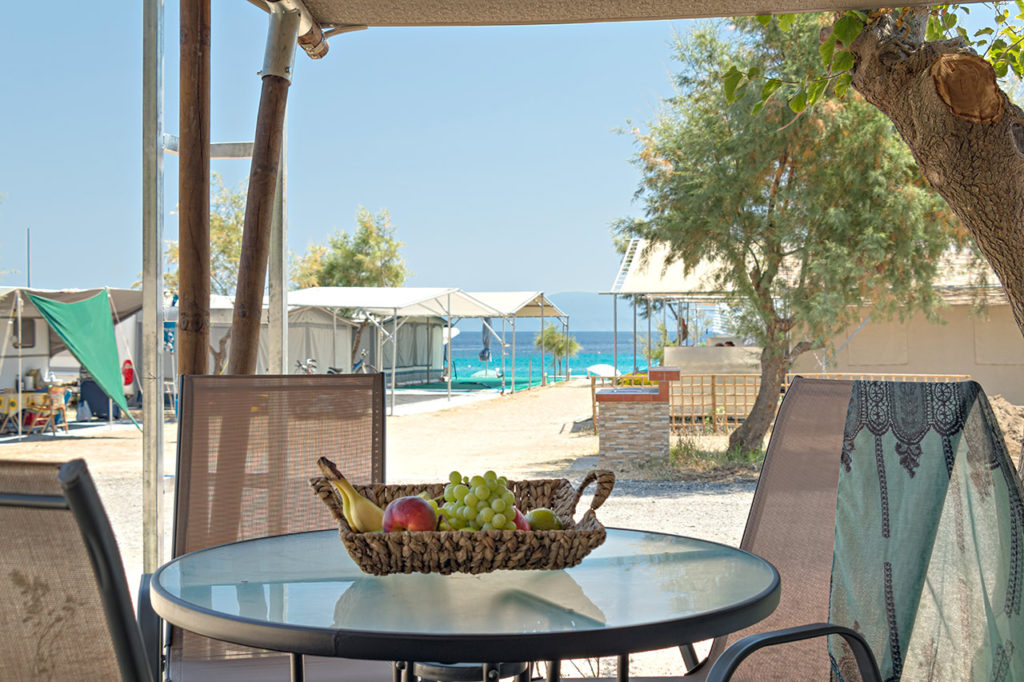
What is rowing camping?
The term would seem fairly self-explanatory. But scratch a little bit and a delightful diversity of examples, experiences and possibilities appear. Sadly, I can’t provide much personal experience, although I hope to change that. I have gone rowing while camping, most recently on Caliper Lake in NW Ontario with my Oar Board. I have “glamped” while enjoying our Greece Northern Beach Paradise Tour. But I have not loaded equipment into a rowing shell or support boat and rowed from campsite to campsite, or rowed point to point and slept onboard. Let’s explore some fabulous examples.
Rowing camping has been enjoyed for a long time. Dearly beloved by the British, and it would seem based on the number of translations, many people, is the immortal Three Men in a Boat by Jerome K. Jerome. Published in 1889 it chronicles the adventures of three gentlemen and dog rowing a Thames skiff between Kingston and Oxford. Today you can have a similar experience, hiring a camping skiff from Row England, a perfect pandemic getaway. Tweeds not required but pub visits recommended.
At the other extreme is Ellen Falterman who is planning to row around the world. Last year she rowed a loaded aluminum canoe tricked out with sliding seat and oars 2,700 miles down the Mississippi River and along the Gulf Coast. The article calls her badass, in part from her adventures paddling down the Amazon. Definitely no tweeds and no pubs. In between these two extremes there are many options and possibilities for rowing camping.
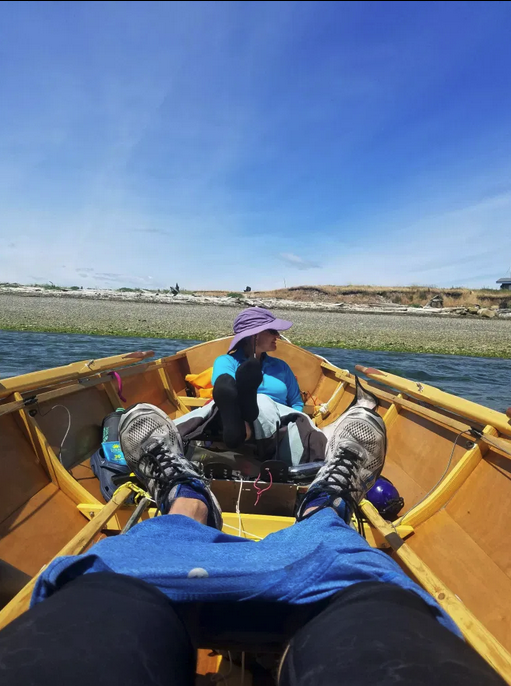
How do you go about rowing camping?
Preparation and Planning
Marieta has been planning her trip on the Columbia for over a year, and it is something that she has dreamed of all her life. It is a river she is already familiar with, plus she has worked as a rafting guide. Leigh Dorsey and her partner Dameon Colbry (with the perfect website name of Rowing to Wild) have participated in the Race to Alaska but have also rowed 260 miles along the coast of Maine, where they live.
My number two tip is plan for all aspects of the trip ahead of time, so you can enjoy it and not be stressed when you run into challenging situations. And there are a ton of factors to consider! You need to have a good grasp on the tides and currents in your area (if on salt water), the degree of boat traffic expected along your route, a basic understanding of the Rules of the Road when it comes to interacting with other boats, and some solid navigation skills (there are no road signs on the water!)
Leigh’s number one tip is to begin small. Perhaps even just a row to a picnic spot and back for your first outing, building gradually to even greater challenges. This means you can build skills and test your equipment.
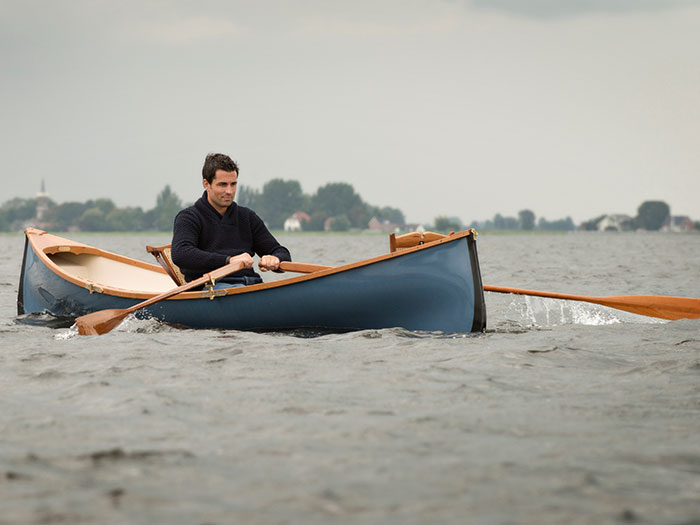
Boats
What you row is the most important equipment. A four-time USA national team member, Erik Frid, completed a 318-mile row on the Erie Canal as a means to find closure when he retired from the sport. He started by rowing camping for the first three days before heading to hotels. What is remarkable is that he used a Fluid racing single! This man can pack light.
Fixed seat boats have ample cargo capacity, but usually require a small army to get on to and out of the water. My bias is to sliding seat for distance, so I salute the Scottish Coastal Rowing Association for its 2021 Row Around Scotland in St. Ayles Skiffs. Luckily there are options for cargo capacity and sliding seats. Adirondack Guide Boats look like canoes with oars. Those familiar with packing for canoe camping will feel at home. Marieta is rowing a Gig Harbor Salish Voyageur, without the sail. Leigh and Dameon rowed a SAVO 650D along the coast of Maine. This is a Finnish boat and a double, light and versatile and able to pack a lot. For the Race to Alaska they had a different boat built, with enclosed decks or more accurately watertight bulkheads. This not only protects the gear but means that the boat will float if capsized. Perhaps the premier rowing camping boat is the Expedition Rowboat by Angus Rowboats. Looking more like a kayak with hatches and only enough room in the cockpit for the sliding seat, the boats combine seaworthiness with carrying capacity, without sacrificing performance. You can build the boat yourself from a kit. Even my Oar Board could carry camping gear. Maybe that should be my next step on my rowing camping journey – a few days excursion into the wilds of Manitoba.
Some Rowing Camping Tips
- Take many different seat pads (Marieta for the Columbia River)
- Focus on the journey not the destination and study Google Earth for campsites (Jelle, who rowed and camped 4,000 km in Indonesia)
- You’ll need more safety gear than you typically bring on an hour-long row: lifejackets of course, but also a marine radio, sound signalling device, navigation lights if you’ll be out after dark, paper charts, compass, and hopefully a waterproof GPS. An ePIRB (an emergency position indicating radio beacon) is a good idea if you’ll be alone in remote waters or more than a mile offshore. (Leigh in Maine)
- “I probably should’ve done more training, to be honest.” (Erik on the Erie Canal)
- Understand and do not underestimate the waters and weather where you will be rowing.
- Here are five “Rules” of expedition rowing, by the very experienced and opinionated Helena Smalman-Smith
- Eat
- Look after your hands (and bum)
- Shut up and row
- If it is valuable and would sink, tie it on
- Know how to use your abdominals
Most Importantly – the Why
At this point maybe the “why” does not need much discussion or explanation. Perhaps it is a bit like rowing itself, a sport that you either get or don’t get. Some people love camping in nature, and some could not imagine anything worse. Rowing camping does not have to be extreme. Row out to an island on a lovely lake and enjoy the beautiful sunset from your cozy tent and row home the next day. Then daydream of all the places you might explore.
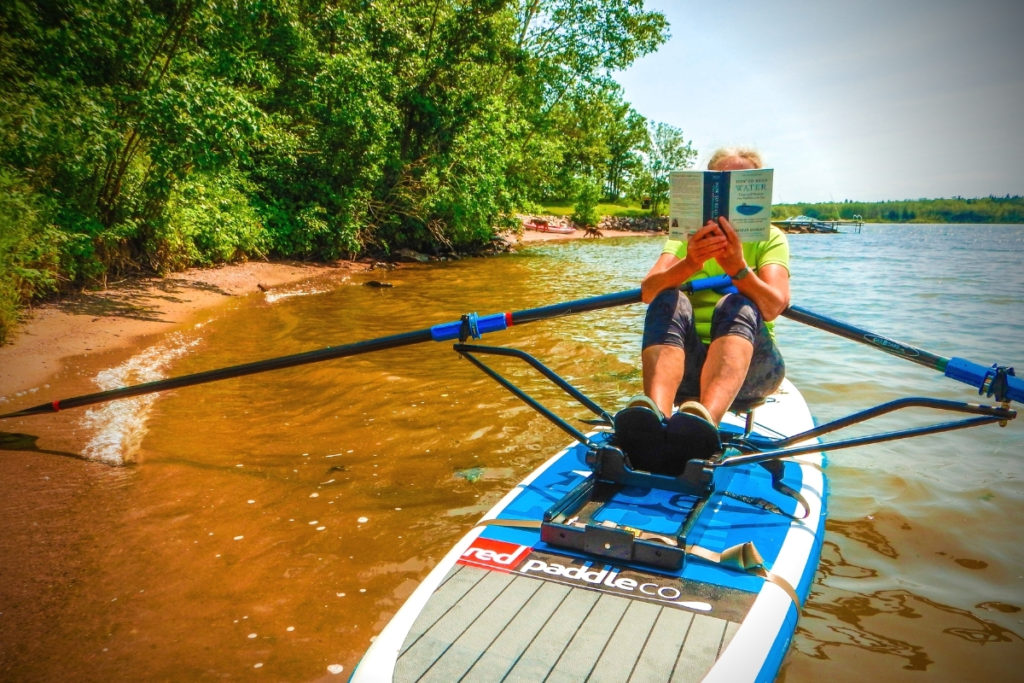
Some Books to Inspire You
Not many of us can immediately jump into a boat and head off on a glorious adventure. As you plot and plan, here is a reading list to inspire you.
- I keep recommending Rowing to Latitude by Jill Fredston, chronicling 20,000 plus miles of rowing adventures in the Arctic and sub-Arctic.
- Rowed Trip: From Scotland to Syria by Oar by Colin Angus and Julie Angus – proof positive of what their namesake boats are capable of, including carrying bicycles.
- On the Water: Discovering America in a Rowboat by Nathaniel Stone. I confess that I have not yet read this one. Maybe I will take it with me when I next go camping and read it by the fire.
- Of course, if you haven’t read Three Men in a Boat, it really is time. Permission to read by the fire in a cozy pub.
So where are you heading to go rowing camping and when? Can I join you?
I love this idea. I checked out those Angus boats, really cool. You could load up tents and all kinds of gear on them. They even have a picture of 2 boats tied together on the water with a tent pitched between them !
Yes, aren’t they amazing. I would love to have one. The barrier for me is that you have to build it yourself, which is well beyond my skill set! But there probably are solutions to that too.
Truly Inspiring. I’m eager to do one of yours, maybe in 2022?